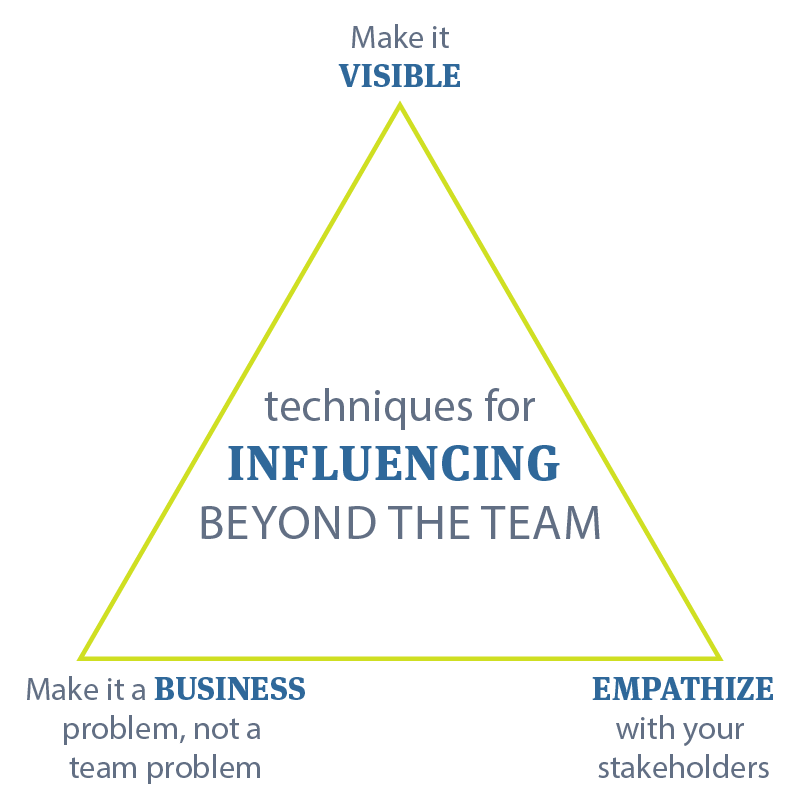In our ScrumMaster and Coach Community of Practice session on Friday, we talked about techniques to help influence beyond the team level. We started by sharing three techniques we regularly use–two that are foundational (bottom of the pyramid), and a third that builds on that foundation:

Empathize with your stakeholders refers to ensuring you understand their motivations, what matters to them, and what incentives they’re responding to. Sometimes we use the phrase “they’re all customers.” When trying to understand and empathize with our customers, we have a broad variety of tools to draw from—mapping out their Jobs To Be Done, pains, gains, considerations, etc. We can do the same with stakeholders we’re trying to influence.
Make it a business problem, not a team one, recognizes that teams sit in a larger business context. Rather than saying “the team is frustrated, so help us make this change,” we can say, “this situation is causing this negative business outcome.” This reframe is much more likely to get the attention of business leaders who may be able to approve or further influence the change.
Make it visible is our most common advice for influencing change, and it builds on the other two techniques since they help you understand what to visualize. Every picture tells a story, so what story do you want to tell?
During this Community of Practice session, we also did some live coaching with two community members who each volunteered a current challenge where they need to influence beyond the team level. As we did so, additional techniques beyond the three we started with were discussed. They included:
- Use the 3 Jobs of Management model to better understand what needs to change, and how.
- Align on the decision making approach through the 7 Levels of Delegation model.
- Examine how the broader system of incentives might be influencing behavior.
- “Thank Your Socks,” a metaphor borrowed from *The Life-Changing Magic of Tidying Up* author Marie Kondo, which helps us avoid sunk cost fallacy and the tendency to hold on to approaches beyond their usefulness by thanking those things for what they’ve done for us then discarding them.
- Avoid getting in a “Drama Triangle,” where you’re the hero saving a victim from a villain. Instead, play a coach role and get the other parties in a room (virtual or physical) together to hear directly from each other.
- If you can’t make the system “anti-fragile,” where it improves during stress and challenges, at least figure out how to make your team more resilient to stress and challenges, for example, by breaking work into much smaller pieces.
- And finally, we rediscovered the idea that if you want to influence change, you probably need to start by changing yourself to being more open, humble, and empathetic.
This week, our Humanizing Work Show episode also touches on an example of influencing beyond the team. It’s a mailbag episode responding to a question from a community member with a manager who wants to attend the team’s retrospectives but isn’t aware of the side effects of that. We tackle whether managers should be in retros and, if not, what they should focus on instead.
Our Communities of Practice are made up of alumni of our courses and our annual conference. If that’s you and you want to get in on the discussions as they happen, contact us more more information!
Last updated